by Ken Gargett
We are undoubtedly enjoying a golden era for great champagne as expertise in both vineyards and wineries has never been more apparent. There have been a series of great vintages, and while prices have increased they still lag a long way behind the sort of money you need to pay to get Bordeaux, Burgundy, or most other great wines from around the world of similar quality.
Innovation is happening throughout the region: we have seen the emergence of grower champagnes and we are past the hump where every grower offering was shiny, new, and exciting. Now we can see just which wines really did make the grade and which have faded from the consciousness. Champagne houses are providing consumers with more information than ever before and, contrary to what some feared, the sky has not fallen. Champagne has entrenched its position as the greatest of all sparkling wines and one of the truly fine wines on the planet.
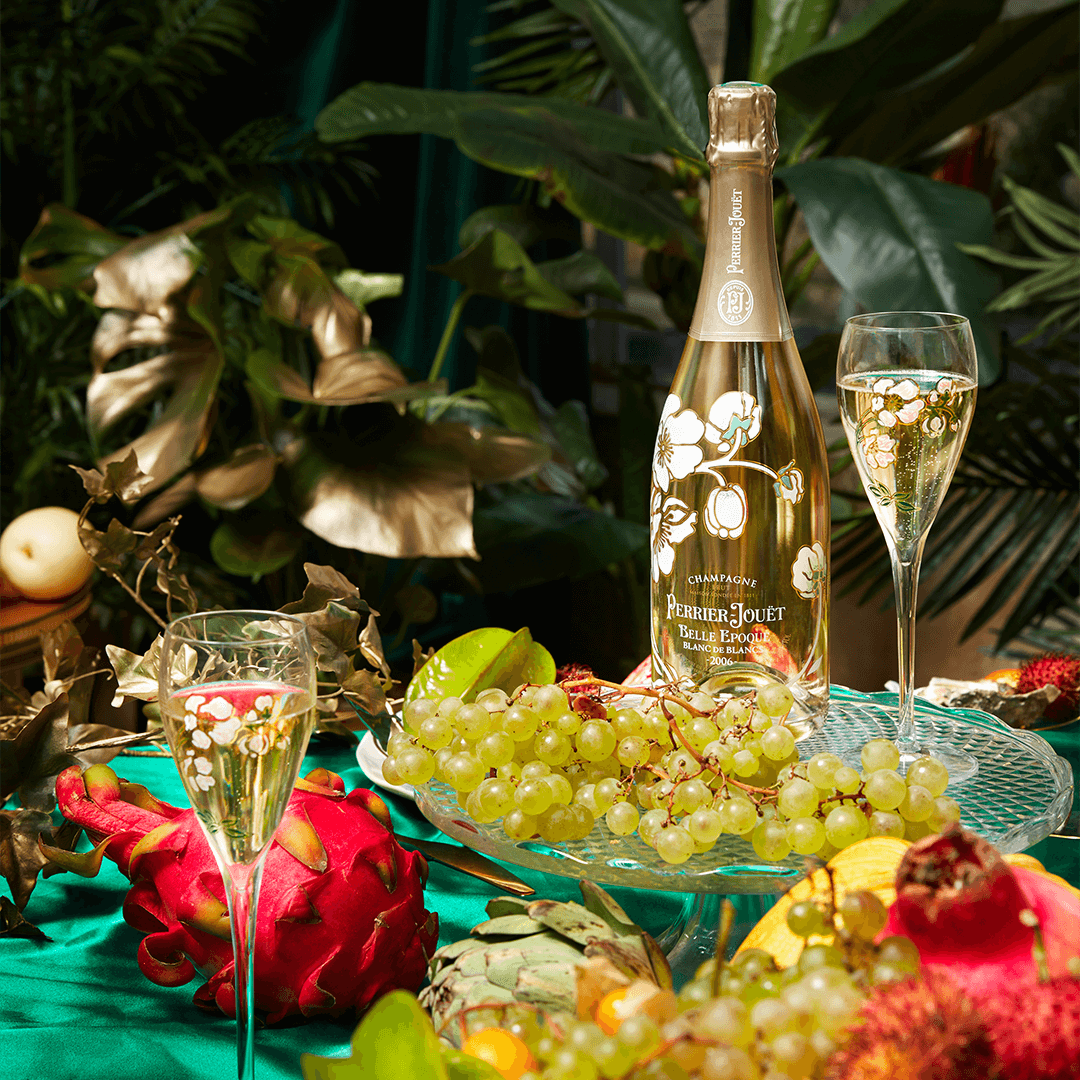
Perrier-Jouët Belle Epoque Blanc de Blancs 2006
If there is a potential blip on the horizon, it is the danger posed by continued climate change. While we have seen far more vintages released in recent years than ever before plus a combination of improved vintage conditions and winemaking skills, if the region continues to warm then it risks losing its identity. At the moment, vintages are harvested ever earlier as warmer conditions have been experienced, but many would suggest that so far this has been to the region’s benefit. If things go much further, that will change.
The one person I have met who was over the moon about climate change was a German winemaker (perhaps it’s better if I don’t name him) who saw the results as greatly benefiting his region, leading to endless great vintages. His views might depend on just how far the changes take us.
The 2006 vintage in Champagne
The 2006 vintage is perhaps showing evidence of climate change (not to say that there weren’t warmer years in the past, of course).
Following on from the sensational 2002 and the excellent 2004, 2006 is probably the next best this century until we hit the brilliant 2008s. It exceeds the solid 2005s (a generalization), the clumsy 2003s and the horrible 2001s; 2007 is an interesting vintage in that while not that many houses released a vintage wine, those who did managed to make some excellent ones. There just are not enough of them.
In 2006, June and July were dry with lots of sunshine, providing an excellent start to the vintage with good ripening and flowering. There was some hail, meaning that a few vineyards suffered but it was not widespread. Things turned sour in August, which was wet and humid, destroying much of the early good work and threatening disease. September was a return to the heat and sun with cooler nights, which helped to maintain acid levels.
The harvest started on September 8, 2006, with the picking of Chardonnay in Sézanne and went through to October 2 in Mailly. The conditions allowed Champagne to reach the maximum permitted yields of 13,000 kilos/hectare. Chardonnay seems to be the prized variety from this vintage with a lovely combination of ripeness and freshness, although there was plenty of good Pinot Noir from the Montagne de Reims. Acidity was marginally down. The style in general is rich, ripe, exuberant wines with plushness and generosity. The question of acidity levels may see some lesser wines mature faster than ideal, but they are still full of life and flavor and should be so for quite a while to come.
Vintage reports may consider both the weather and climate and then the subsequent wines and the standards they reached, but there is always a degree of subjectivity. I have had many arguments over the 2003 vintage (and not just for Champagne) with friends – some love it, but I fail to see the appeal.
It’s always hard to take too much issue with something where subjectivity plays a role, but in researching this I could not help but notice the thoughts on Winesearcher.com, normally a most useful site. It has declared that 2000, 2004, 2005, 2006, and 2007 are all basically past it, bar a few of the very best wines. And yet some houses have only just released 2006 champagnes: Billecart-Salmon’s Clos Saint-Hilaire 2006 hit some shelves in December 2021 and won’t be available in some markets until early 2022. Seems odd if the suggestion that the vintage is past it are true.
Personally, I think such claims are nonsense and the site should know better or use someone who does not seemingly dislike champagne. There are many wines from all of the vintages mentioned that are not only drinking beautifully but just beginning their journey. Cellared well, they have years of pleasure to offer.
I’d recommend turning to Charles Curtis’s Vintage Champagne, which is much more reliable. He acknowledges that the 2006 vintage misses ranking at the very top because of the slightly soft acidity, but he believes it very good with a “host of rich wines . . . the best of which will age for decades.” Agreed.
Perrier-Jouët Belle Epoque Blanc de Blancs
One of the very first pieces I ever wrote for Quill & Pad was on the Perrier-Jouët Belle Epoque Blanc de Blancs 2002, which for me still ranks as one of the greatest champagnes I’ve been privileged to enjoy. I tasted the 2004 a few years later (although only in magnum, not that I am complaining), another superb champagne though not quite the match for 2002. I doubt anyone expects the 2006 to quite match the 2002, but I was still expecting something very special.
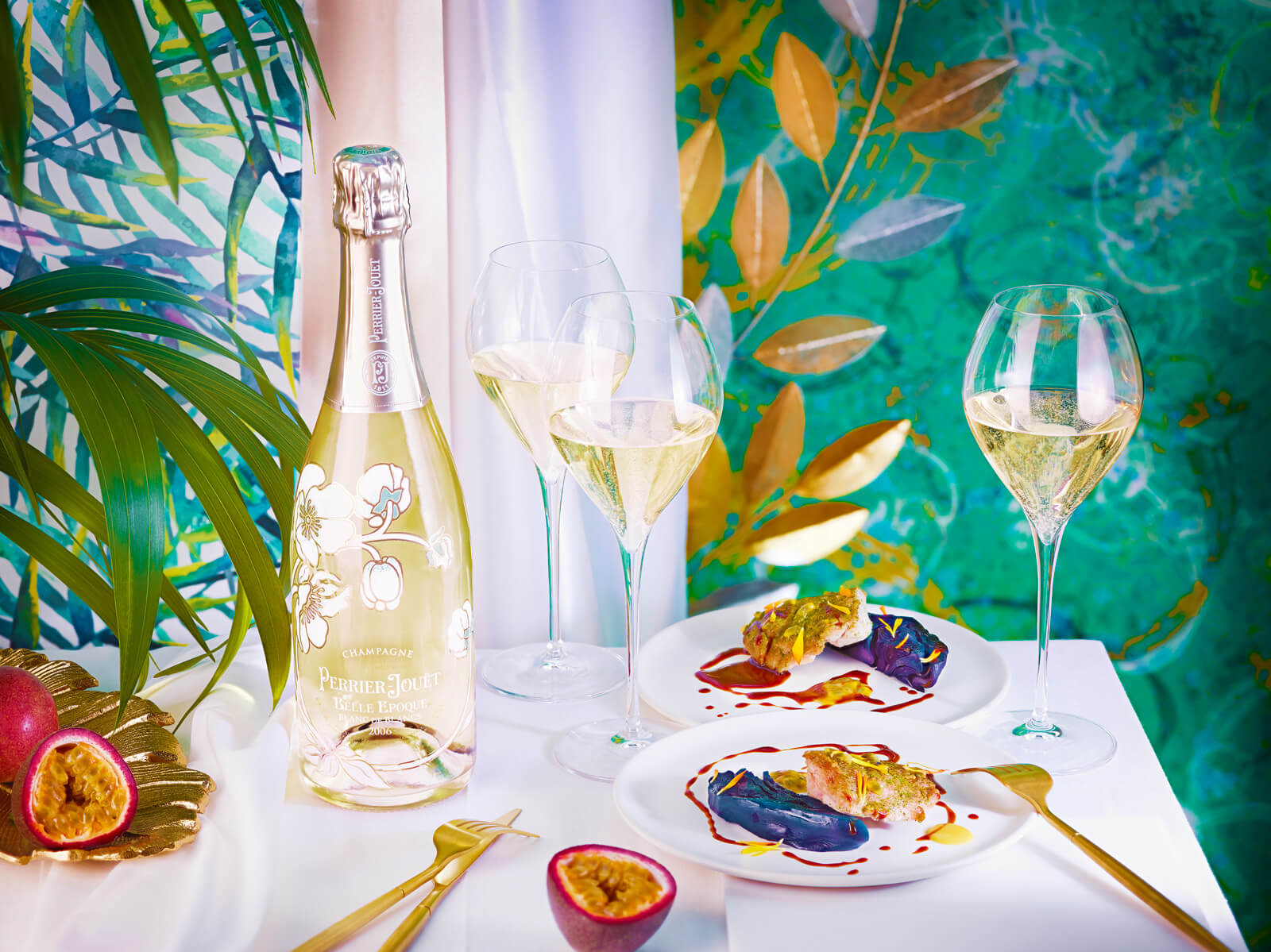
Perrier-Jouët Belle Epoque Blanc de Blancs 2006
For those wondering about the 2002, a 12-bottle case of it was auctioned at Christie’s in London in December 2021. The estimate was £2,200 to £3,000; the final price, not including buyer’s premium, hammered at £4,288, making it one of the more expensive 2002s at the moment.
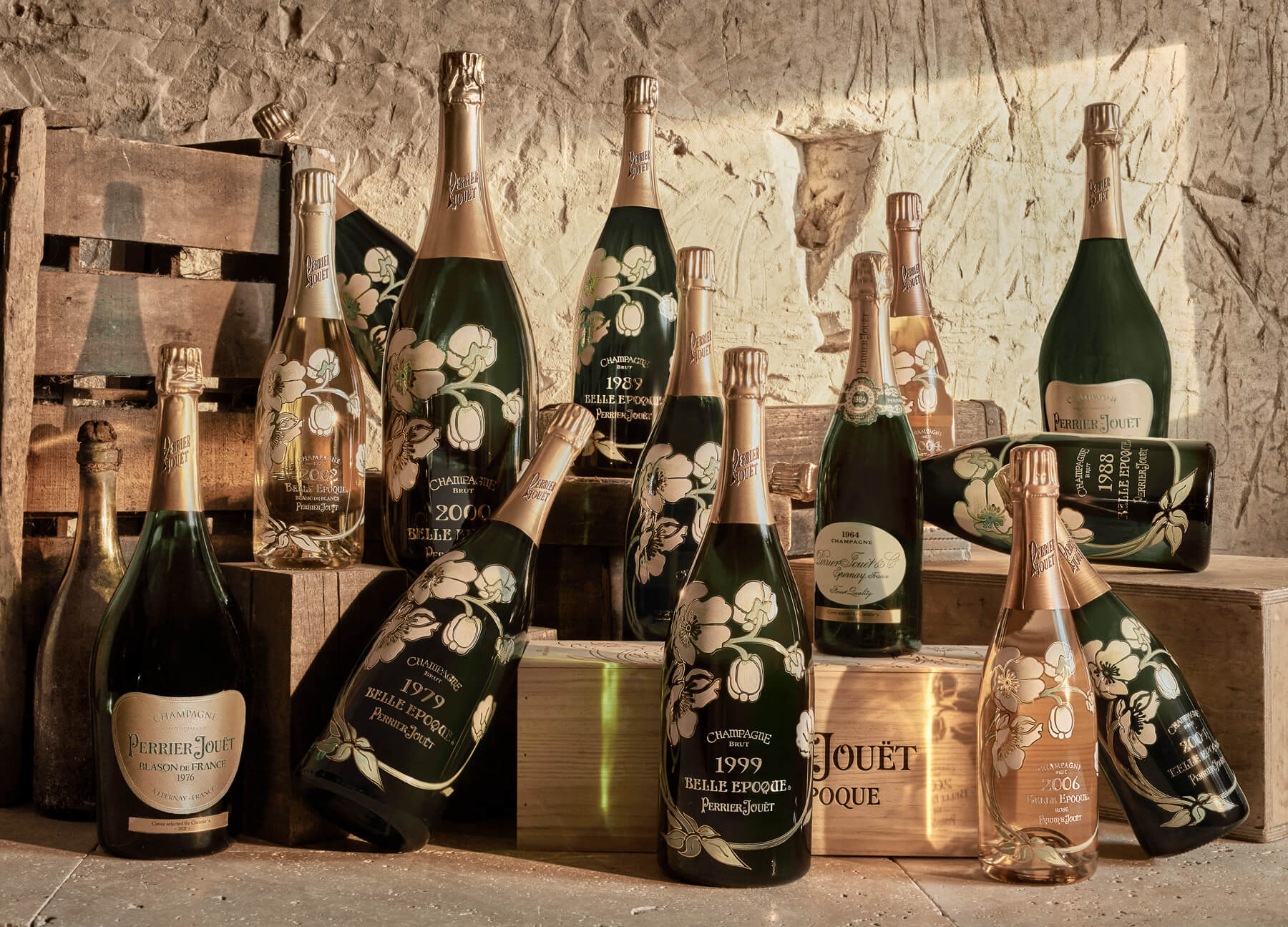
Perrier-Jouët Belle Epoque Blanc de Blancs champagne vintages (photo courtesy Christie’s)
Something a bit special occurred at the very same auction and, as it involves Perrier-Jouët, allow me to digress. Also up for sale was a single bottle of Perrier-Jouët Brut Millésimé 1874, which has spent almost 150 years in perfect cellaring conditions in the house’s immaculate cellars. The estimate for the bottle was between £10,000 and £15,000. In the end, it went for an astonishing £42,875. These were part of 15 lots submitted by the house from the 1874 to more recent vintages.
The successful buyer, unknown at this stage, will be able to enjoy the bottle at the Maison Belle Epoque, the original Perrier-Jouët family home in Epernay built in 1811 (the same year the house was founded), with up to ten friends. Dinner will be by chef Pierre Gagnaire, whose restaurant at Hotel Balzac in Paris has three Michelin stars.
I’m not sure if it is compulsory to drink the 1874 then or if they can cellar it until such time as they wish to enjoy it. A first world problem, if ever there was one.
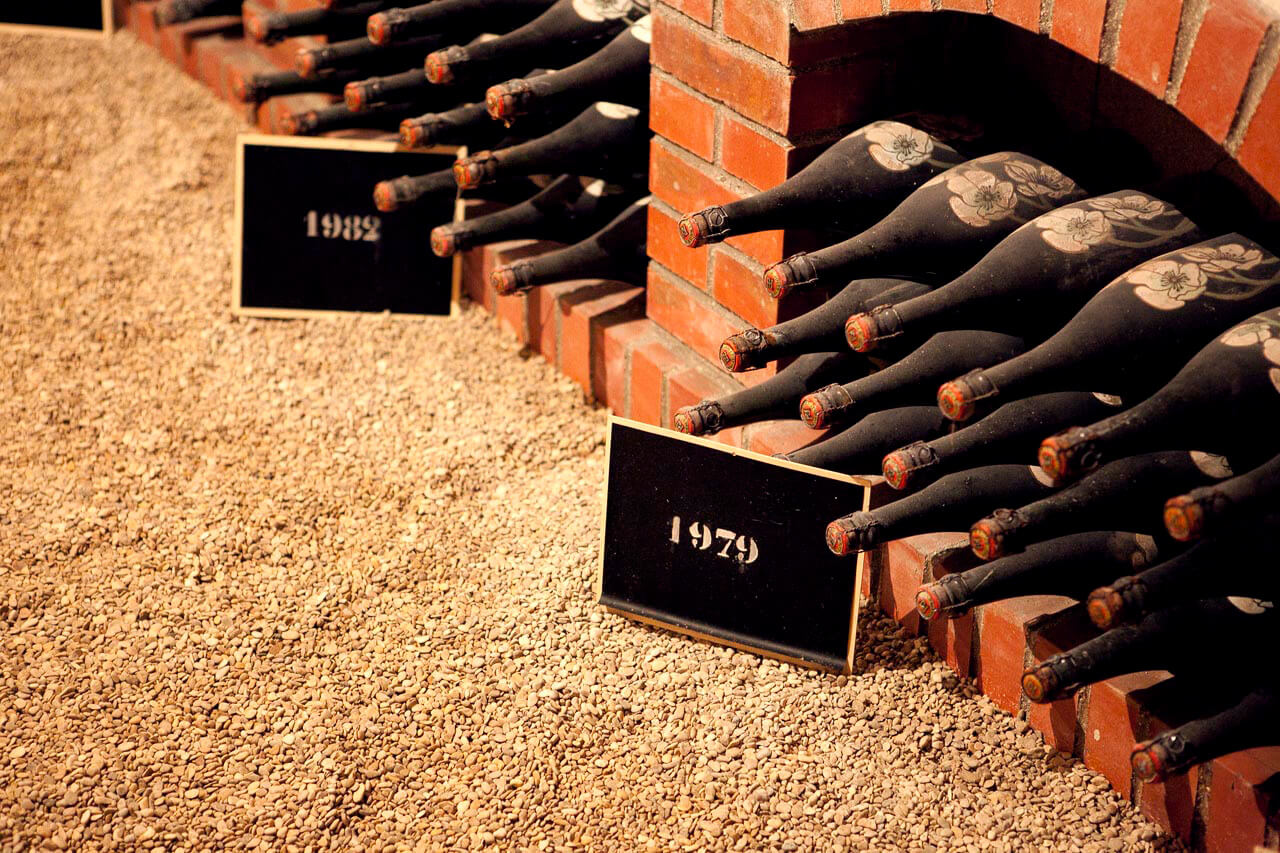
Perrier-Jouët’s champagne cellar
The 1874 from Perrier-Jouët held the record for the world’s most expensive champagne for more than 80 years. Whether it has recovered that title might depend on how these things are measured. For example, there are rumors that some retailers have sold bottles of the famous 1907 Heidsieck, the champagne from the bottom of the Baltic Sea, for up to $250,000, though the price seems to have settled at around a tenth of that, give or take. Personally, I’d just love to know how the wine opens.
The record came about as back in March of 1888 Christie’s (some nice synchronicity there) sold seven magnums of the Perrier-Jouët 1874 to a “P. Gordon” for the sum of £25. At the time, this was noted as an amount equal to four months’ salary for a skilled tradesman. I suspect that if it were possible to sell seven magnums of the wine today that it might take our tradesperson a lot longer than four months to earn the equivalent, no matter how skilled they are. This was a record for champagne at the time and it stood until 1967. It shows that champagne at auction had far less appeal to buyers than it does today.
Why the house chose to sell this bottle I have no idea, but Perrier-Jouët has not completely emptied the cellar. There is still a bottle of Perrier-Jouët 1825 locked away down there.
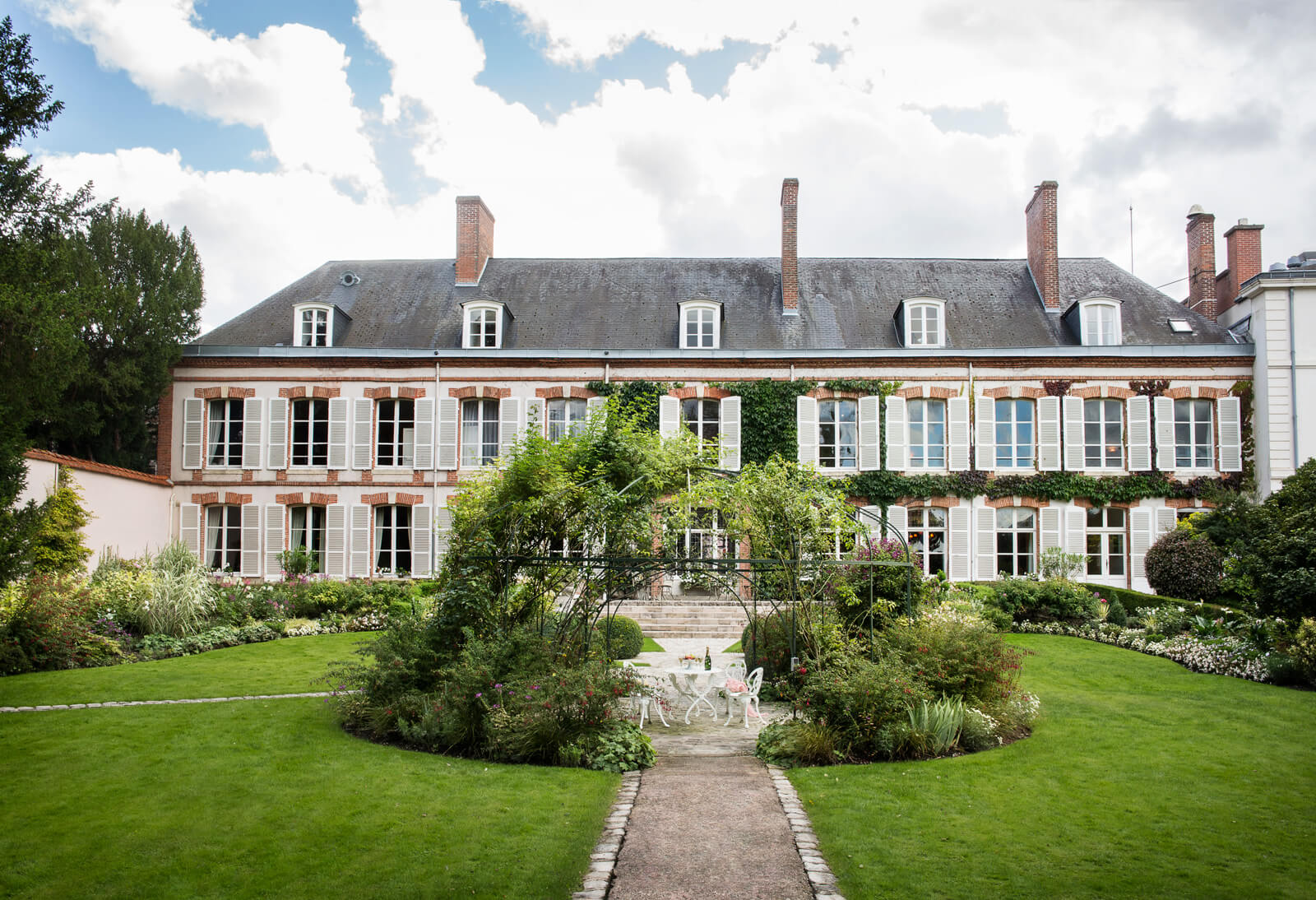
Maison Belle Epoque Perrier-Jouët
I wrote about the Maison Belle Epoque and some of the amazing art and furniture it contains when I looked at the 2002. Visiting – even better is staying there – is a special experience.
The champagne, which the house notes was blended less than a decade after the conclusion of the American Civil War, was made from Chardonnay from Cramant, making it a forerunner to the Belle Epoque Blanc de Blancs in some ways (some believe that there was a percentage of Pinot Meunier included but records were kept perhaps less diligently than they might be today).
The Perrier-Jouët 1874, which followed the trend of the day to a drier style, was considered Oscar Wilde’s favorite champagne, so much so that he ordered a case of it while he was in jail for “gross indecency.” Whether it ever got delivered to his cell I have no idea, but one rather hopes so. His dying wish was one final glass of “PJ.”
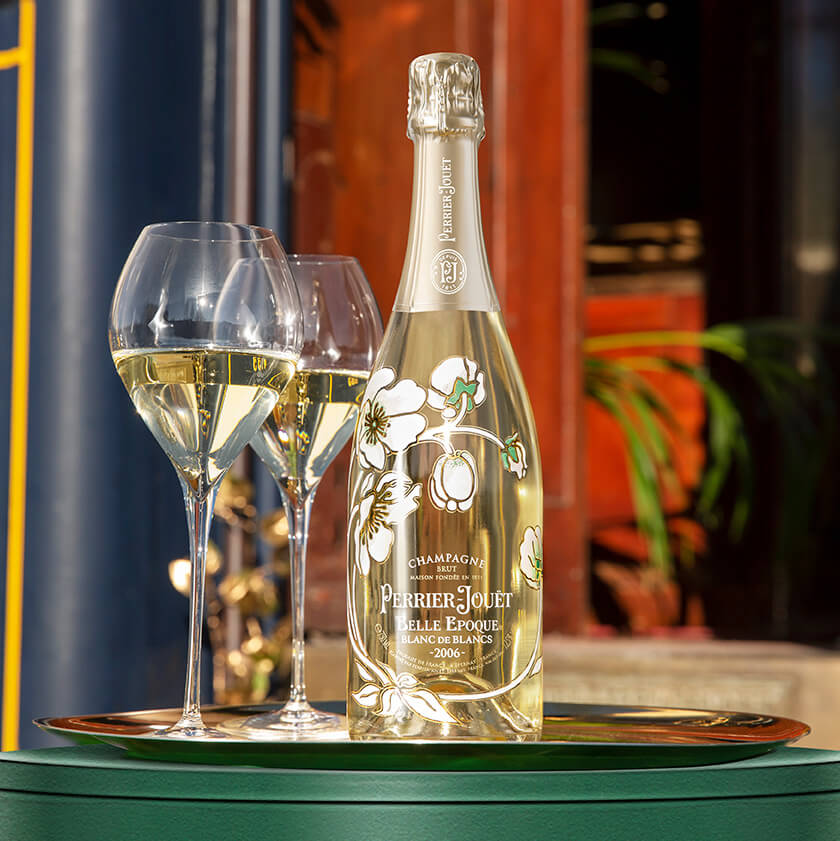
Perrier-Jouët Belle Epoque Blanc de Blancs 2006
The Chardonnay for the Belle Epoque Blanc de Blancs (as a Blanc de Blancs the wine is, of course, 100 percent Chardonnay) comes from two vineyards in Cramant in the heart of Côtes des Blancs, which the house has owned for around two centuries: Bouron Leroi and Bouron du Midi. The vineyards total 6.8 hectares, although not all the grapes go to this wine. Total production of this wine never exceeds 40,000 bottles and some years have been a quarter of that or less. Dosage is just 8 grams/liter and the wine will spend at least six to eight years on lees. The price varies enormously, given its rarity, but it will not be cheap anywhere (nor should it be): £350 to £400 plus is a guesstimate.
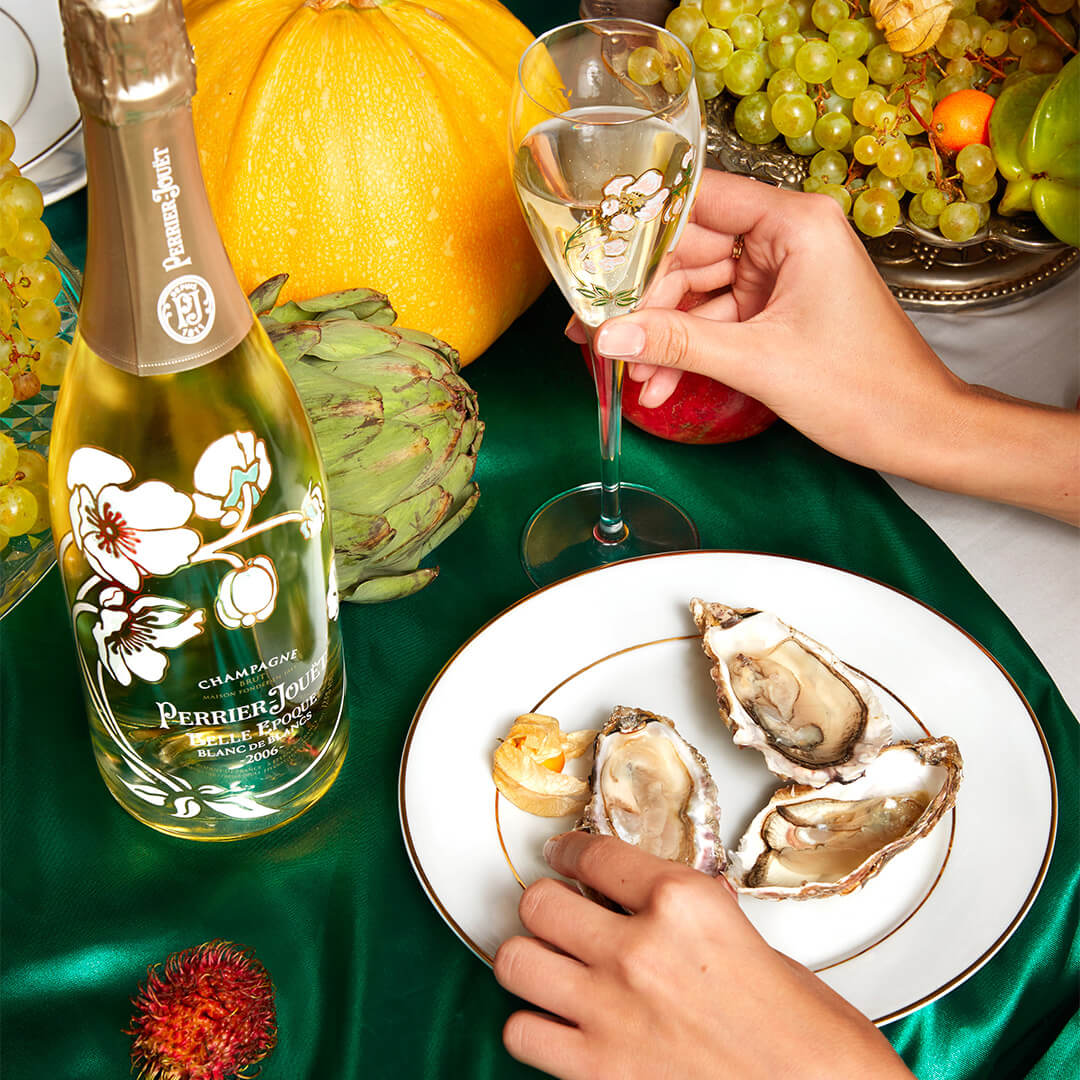
Perrier-Jouët Belle Epoque Blanc de Blancs 2006
There are three versions of the Belle Epoque. The flagship, so recognizable with its floral decoration. The Japanese anemone pattern entwining the bottle made its debut with the 1964 vintage in January 1970 at a party at the Alcazar nightclub in Paris to celebrate Duke Ellington’s seventieth birthday in the presence of Maurice Chevalier. The Rosé followed.
Then the Blanc de Blancs with the 1993 vintage. Since then, there have been five further releases: 1999, 2000, 2002, 2004, and the 2006. The Blanc de Blancs consists of only one percent of the total production of Belle Epoque. The Rosé is eight percent, and the rest goes to the flagship.
The extraordinary art nouveau design of the bottle was created by artist and master glass maker Emile Gallé, who was one of the pioneers of the movement. He had designed the bottle back in 1902, but it was not adopted by Perrier-Jouët until the release of the 1964.

Séverine Frerson, chef de cave at Perrier-Jouët
All of the Belle Epoque Blanc de Blancs were made by Perrier-Jouët’s brilliant chef de cave, Hervé Deschamps, who is now retired. His place has been taken by the house’s first female chef de cave, Séverine Frerson. Deschamps was only Perrier-Jouët’s seventh chef de cave, not bad for a house that commenced operations back in 1811 when Pierre Nicolas Perrier married Rose Adélaïde Jouët. Deschamps has made the Blanc de Blancs with marginally less pressure than in a usual champagne, giving it the impression of being more a complex wine rather than just another champagne.
Perrier-Jouët Belle Epoque Blanc de Blancs 2006 tasting notes
So how does the 2006 compare? The incredible elegance and ethereal qualities of the 2002 are what make it stand apart for me. This was never headed down that road – the vintage simply would not allow it. Instead, we have a generous, richly flavored, delicious champagne, impeccably made.
The color is of dawn’s first light with occasional flecks of green throughout. Rich notes on the nose – toast, brioche, cumquats, florals, jasmine, glacé lemon, and stone fruit. On the palate, more apricot kernel and vanilla characters emerged. There is great length here and the palate is seamless. A wonderfully creamy texture with a silky finish. Bright acidity, very good for 2006, but it really is the amazing length and the way that the flavors linger that excite.

Perrier-Jouët Belle Epoque Blanc de Blancs 2006
A joy now but this has years ahead of it. Bold and exuberant, a stunning champagne. Yes, different to 2002 but very much worthy of your attention. 97.
One piece of speculation if I may. I know that there is many a slip twixt cup and lip, so to speak, but I can’t help but think that the 2008 vintage is perfectly suited to the style of wine that is Perrier-Jouët’s Belle Epoque Blanc de Blancs. I would imagine that it will at least match the 2002, if not exceed it, and I cannot wait to see it. With luck, I’ll be able to let you know.
Hervé Deschamps has described the Perrier-Jouët Belle Epoque Blanc de Blancs as “the quintessence of Chardonnay with the brilliance and rarity of a yellow diamond.” Hard to argue.
For more information, please visit www.perrier-jouet.com/en-ww/champagnes.
You may also enjoy:
Perrier-Jouët Belle Epoque Blanc de Blancs: One Of The Finest Champagnes I Have Ever Enjoyed
Louis Roederer Rosé 2012: A Gloriously Ethereal And Elegant Champagne
Leave a Reply
Want to join the discussion?Feel free to contribute!





















































Your climate change worries are not supported by statistical studies of weather. Perhaps I could quote from a recent article in wattsupwiththat ( https://wattsupwiththat.com/2021/12/28/stop-whining-about-wine-60-minutes-data-show-grape-production-doing-well/ ) :-
‘Climate change is accounted for by most government agencies involved with monitoring weather and climate as changes in average conditions over a thirty year period. In 2021 France experienced a bad spell of weather which affected grape production. There has been no significant change in average temperatures or precipitation in France or in most European wine producing countries over the past 30 years.’
Cheers!
Nothing Ken wrote in this article about climate change is disputed by the article you refer to. Ken wrote:
“If there is a potential blip on the horizon, it is the danger posed by continued climate change. While we have seen far more vintages released in recent years than ever before plus a combination of improved vintage conditions and winemaking skills, if the region continues to warm then it risks losing its identity. At the moment, vintages are harvested ever earlier as warmer conditions have been experienced, but many would suggest that so far this has been to the region’s benefit. If things go much further, that will change.”
As the climate warms in the wine growing regions of Europe (and elsewhere), as it has over the last decades, wine producers will have to plant different grape varieties that are more suited to the warmer conditions. As Ken wrote, that will mean that some wine regions lose the identity that they now have by being associated with the flavors of the grapes that they are now growing.
https://www.economist.com/europe/2021/07/15/climate-change-is-affecting-wine-flavours
Regards, Ian
Further reading regarding the impact of climate change of French wine.
Warmer temperatures cause grapes to ripen faster, resulting in more sugar in the grape. That ultimately affects the alcohol content, acidity level and the color of wine.
https://time.com/5777459/france-wine-climate-change/
https://www.rfi.fr/en/france/20190923-wine-france-climate-change-future-winegrowers-drought-heatwave
https://www.nationalgeographic.com/science/article/wine-harvest-dates-earlier-climate-change
Thanks Ian. Just saw the note from our friend.
I am always more than happy to debate/defend/retract if necessary what I write but when it comes from a site long acknowledged as utterly without credit – i think ‘low on facts and high on conspiracies and pseudoscience’ was one description – then it becomes a bit like dealing with flat-earthers. Well, exactly like dealing with flat-earthers.
For what it is worth, the site was established by a gentleman who was/is a self-proclaimed leading climate scientist based not on any actual work, no real research, not on attending any recognised universities or even i think, finishing high school (no doubt the deniers will be quick to correct that if I am wrong) but on reading the weather on some tiny tv station. That, apparently, made him an expert (bet all those genuine scientists had known it was that easy). It is a site often quoted by deniers who are determined to ignore real science and who simply do not care about the facts.
Perhaps another way of looking at this would be that over thirty years, the period quoted by our friend, i can’t tell you how many hundreds of winemakers i have spoken with. But I can tell you how many I have met who would agree with our friend as to no change in temperatures over that period. Zero. Not one. These are the people who are out there, every day, experiencing it first hand.
The mere fact that the average date for harvest has moved forward by several weeks to a month (obviously varies from region to region) is a rather large clue.